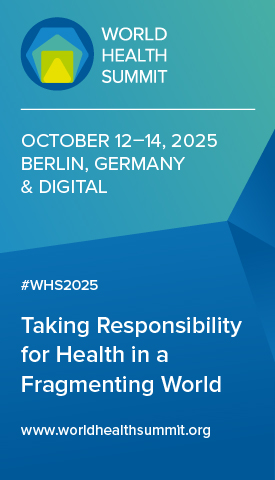Strengthening Solar and Clean Energy at the UN’s COP29
As a climate finance deal at COP29 in Baku, Azerbaijan, in November teetered on the brink of collapse, negotiations went into overtime, with delegates finally finalizing a deal to triple public finance to developing countries, from the previous goal of $100 billion to $300 billion annually by 2035. This new collective quantified goal (NCQG) was agreed to following two weeks of intensive negotiations and several years of preparatory work – in which all participating countries had to unanimously agree on the final amount, date and specific text.
Many countries, particularly developing ones, regarded the deal as wholly inadequate, falling significantly short of the $1.3 trillion they demanded. But as United Nations secretary general António Guterres commented in his closing remarks in Baku, this deal represented a significant “starting point” in protecting those on the frontlines of climate disasters, with much more needed, and soon.
With climate finance representing the central theme at COP29 and capturing most of the international media attention, other notable advances related to clean energy and renewables such as solar power were overlooked.
One of the most consequential was the deal brokered on the carbon market mechanisms of the Paris Agreement, commonly referred to in climate circles as Article 6. After almost 10 years of heavily contested negotiations, this last-to-be-resolved section of the 2015 Paris Agreement now enables the country-to-country process for emissions trading and carbon credits to become fully operationalized under the UN’s centralized carbon market mechanism.
Other notable clean energy initiatives emerging from COP29 include:
A reaffirmation of COP28’s commitment to triple global renewable energy capacity to approximately 11,000 gigawatts by 2030 and to double the global annual energy efficiency rate from 2% to 4% every year by 2030. Annual investments in energy efficiency globally would need to reach $1.8 trillion by 2030 to achieve this goal.
The Global Energy Storage and Grids Pledge, which is designed to accelerate COP28’s renewable energy targets by building resilient, interconnected power systems. This includes a six-fold increase in global energy storage capacity to 1.5 terawatts by 2030, with 25 million kilometres of new or refurbished grids proposed by 2030.
The Green Energy Zones and Corridors Pledge to facilitate the integration of renewable energy capacity by linking green energy zones across large geographic regions. A key aim of this initiative is to launch stronger regional cooperation in renewable energy development and deployment.
The COP29 Hydrogen Declaration, which commits parties to scale up the demand for and deployment of zero-emissions hydrogen by integrating hydrogen into national climate and energy plans and accelerating global hydrogen standards.
Additional pledges of $85 million for the Loss and Damage Fund, bringing the total contributions to $720 million. Notable new contributions were announced by Australia, Austria, Luxembourg, New Zealand, Korea and Sweden. In 2025 the fund will begin financing new clean energy projects in those countries most affected by climate change.
Significant regional clean energy initiatives were also launched, including:
Tera Med, led by IRENA, which pledges to develop 1 terawatt of installed renewable energy capacity in the Mediterranean region by 2030.
The No More Coal-Fired Plants initiative in Latin America, a regional agreement to halt the construction of any new coal-fired generation facilities in the region and accelerate the transition to clean energy.
The African Energy Efficiency Alliance, which aims to align Africa with global targets to double energy efficiency by 2030, while growing Africa’s energy productivity by 50% by 2050.
As the gavel dropped to mark the close of COP29, UN Climate Change executive secretary Simon Stiell cautioned that although “progress has been made, our work is far from complete … This is no time for victory laps. We need to set our sights and redouble our efforts on the road to Belém.”
To translate Baku’s agreements into tangible outcomes and pave the way for COP30 in November 2025, the international community must prepare to submit all the Nationally Determined Contributions (NDCs) by February 10, 2025, with updated, ambitious targets for 2030, and aligned with the outcomes of COP28’s first Global Stocktake in 2023.
Technical work on the Article 6 mechanisms must continue, in preparation for discussions at the UNFCCC subsidiary bodies session in Bonn in June 2025.
The accelerated implementation of the carbon market mechanisms is vital for enabling governments and non-state actors to trade greenhouse gas emission credits. Stricter standards in building codes, industrial processes and appliances, and stronger incentives for energy retrofits and new technologies are cost-effective means of scaling up energy efficiency efforts to meet the climate goals.
Continued progress in clean energy technology is also critical. Increased public and private investment and rapid commercialization in advanced energy storage, green hydrogen production and next-generation solar cells should be prioritized. Sharing best practices to address supply chain challenges for clean energy technology offers another low-cost mechanism to advance clean energy development and deployment. Finally, robust monitoring and accountability systems for tracking and reporting on clean energy deployment are vital. To ensure the needle moves in the right direction, mechanisms to hold countries accountable for their renewable energy commitments should be considered.
Yet although the NCQG from COP29 is a step forward, the clean energy investment gap remains significant. Concessional finance to support clean energy projects in developing countries must be scaled up. Developing innovative financing mechanisms to attract private capital is critical.
The transition to a climate-resilient future hinges on an unprecedented mobilization of equitable and innovative climate finance. In the absence of transformative financial commitments, the road to COP30 in Belém risks encountering unmanageable obstacles in the global effort to supply clean energy to adapt to and mitigate the massive harms from a dangerously warming planet.












